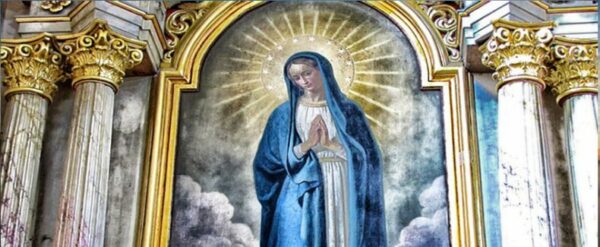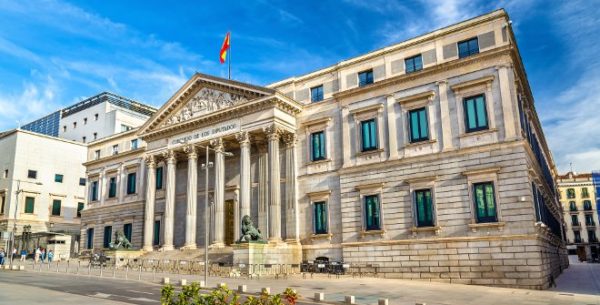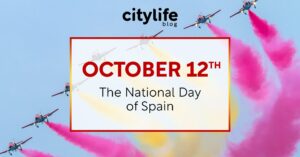
The Spanish love their holidays and celebrations! There are several different public holidays in Madrid throughout the year, each with their own special celebrations. It will be good to have an understanding of the different holidays that the Spanish people celebrate, so you’ll know which days you have off from classes or work and when to prepare for each of these holidays!
Although there is no official religion of Spain, many Spaniards consider themselves Roman Catholic. Therefore, many of the publicly celebrated holidays in Spain are linked to this religion. Another interesting aspect of Spanish holidays are the concept of a puente or “bridge”, an option some Spaniards choose to extend their time off to enjoy the holiday to the fullest! If you’re going to be in Spain during any of the celebrations, enjoy your day off and take part in the festivities if you wish!
January 1st: New Year’s Day

This one is hardly unique to Spain. New Year’s Day takes place on the same day of every year and every year it’s a guaranteed day off! That way everyone and anyone can enjoy all the New Year’s festivities they want around the country. As this day is a big one, it’s a good idea to prepare for nearly everything in your neighbourhood to be closed or at most, be operating on very limited hours.
January 6th: Día de los Reyes

Three Kings’ Day, or Epiphany, is celebrated on January 6th in Spain. This holiday represents the bearing of the gifts from the Three Wise Men to Jesus. In Spain, this holiday is celebrated by giving presents to one another. Christmas is not as big of a deal in Spain, as there is more hype and celebration surrounding Three Kings’ Day. Children in Spain will get a few gifts on Christmas, but the big holiday is Three Kings’ Day. At night, those who celebrate Three Kings’ Day will leave their shoes by the door, in hopes that the Three Kings’ will leave gifts there.
Spaniards also celebrate by cooking a “Roscón de los Reyes” or the Kings’ cake. Inside the cake there is a trinket, often a small baby Jesus. If you find the trinket in your slice of cake, then legend has it that you’ll have good luck for a year. There is also a parade in Madrid, featuring the Three Kings. The Kings’ will throw candy out into the crowds, and party goers will scramble to catch it.
March 19th: San José (Father’s Day)

Dia de San José is not an official holiday in the community of Madrid
Once again this modern day holiday is influenced by it’s Roman Catholic roots. The Día de San José is celebrated on March 19th and marks a time for locals to celebrate the life of Joseph, the husband of the Virgin Mary. As such, this day has also become Madrid’s official day to celebrate Father’s Day. The holiday is usually celebrated on March 19th.
April 13th & April 20th: Semana Santa

This year, Semana Santa takes place from Palm Sunday April 13th to Holy Friday on April 20th. These dates can change, depending on the year. Throughout this week, several different processions occur to commemorate the death of Jesus. Flowers and candles adorn the churches throughout the city. On Palm Sunday and Holy Wednesday, two of the most important processions occur. The first goes off from the Basilica of San Miguel and the second occurs around the Puerta del Sol.
Typical Spanish dishes such as torrija (a sweet bread dish) and Soldaditos de Pavia (fried codfish) are cooked throughout the week to celebrate. Each region of Spain celebrates Semana Santa a little differently, so if you happen to be outside of Madrid during this week, you’ll be sure to experience something new. To read about the official order of events that will occur during Semana Santa, click here.
May 1st: Día de Trabajador

The history of this holiday is a bit rocky. First originating in 1889, it was outlawed when Spain was ruled by Franco. After this death, this holiday was reinstated and is now celebrated every year. Spanish citizens celebrate this holiday by protesting and advocating for their rights by putting on demonstrations throughout the country. On this day, all workers in Spain are given the day off. This holiday is a celebration of the fact that all workers in Spain have the right to work in proper and safe labor conditions.
May 2nd: Holiday for the Community of Madrid

This is a public holiday that is celebrated specifically in Madrid and the surrounding community. This holiday often coincides with Labor Day (May 1st), so many local Spaniards will take this opportunity to travel for the long weekend. This holiday marks the day that the Spanish army rose up against the French troops in 1808 after these French troops attempted to take control of Madrid. Therefore, this holiday is only celebrated in the community of Madrid. As such, this holiday is celebrated with feasts, get together, and parades. Most schools, businesses, and restaurants will be closed on this day. If you don’t want to travel outside Madrid, then use this as a day to relax and enjoy the celebrations. The famous Spanish painter, Goya, commemorated this day in two of his paintings. The one pictured above, “The Third of May,” is featured in the Prado Museum in Madrid.
May 15th: San Isidro

San Isidro date vary from year to year. Keep up to day on the official website
This holiday celebrates St. Isidro, the patron saint of farmers and the patron saint of Madrid. Its said that Isidro once plowed the ground and a spring was created and miraculously saved his son who was stuck in a well. Supposedly, when Price Felipe was sick, Empress Isabel sent him to this spring and he came back healed. Although this celebration is officially celebrated on May 15th, there are several other small festivals and parties celebrated between the 12th to the 16th of May. This festival is celebrated at Pradera de San Isidro, where you will find a shrine to the city’s patron saint. Many people travel from all over the community of Madrid to pay homage to the saint.
Take the metro and exit at Marquez de Vadillo to head to the Pradera de San Isidro. The city celebrates with parades of giant characters (Parada de Gigantes), free concerts, and food vendors selling traditional food. Many pilgrims will drink the water from the spring, which is still found by the shrine today. Others will have a picnic near the shrine. The pilgrimage of those who pay homage to the Saint was also commemorated in a Goya painting called, “A Pilgrimage to San Isidro,” pictured above. There is also an entire museum dedicated to San Isidro that you should check out!
August 15th: Assumption of Mary

This day is another traditional Catholic holiday that has been celebrated in Spain ever since the 1700s. This day marks the day that the Virgin Mary’s body was taken up to heaven, after the end of her life on earth. According to the Catholic Church, it’s said that once Mary’s life on earth was over, rather than her body decomposing, both her body and soul were brought into heaven at one time, and this transition is to be celebrated on this day. In Madrid, we celebrate with a large parade that goes through the center of town, street dancing, and fun for the whole family.
October 12th: National Day of the Kingdom of Spain

October 12th commemorates a momentous time in Spain history. It not only celebrates the day that the Spanish Monarchy sent Cristopher Columbus off to discover the New World, but it is also a day to admire and revel in the power of the Spanish military, the Spanish king and the Kingdom of Spain itself. October 12th is a day off within the community of Madrid and can be enjoyed by visiting the impressive military parade along the Paseo del Prado and up Paseo Recoletos. If you look to the skies you’ll also have the pleasure of viewing the famous air show featuring some classic Spanish war planes!
November 1st: All Saints’ Day

On All Saints’ Day, Spanish citizens return to their home towns in order to lay flowers on the graves of and light flowers in memory of their loved ones who have passed away. This holiday is meant to honor and remember all the lost souls of the world. Spanish people celebrate this holiday in many different ways. Some people view it as a celebration of life of those who have been lost and spend the day in a happy manner, possibly with a party involved. Others, view it as a day to think about their lost ones, and hold it to a different emotional standard. These Spaniards may show strong emotions and remain solemn throughout the day.
Additionally, just like many of the other Spanish holidays, this day is celebrated by enjoy special Spanish treats. Some of these treats include buñuelos de viento (light and airy spherical pastries) and panellets (small cakes or cookies made of many different types of ingredients). The day is also characterized by processions and performances. Additionally, mass will be performed at many churches throughout the city several times a day.
November 9th: The Day of Almudena

This holiday is only celebrated in Madrid and is not celebrated throughout Spain. As the story goes, in 711 AD, much of Spain was overtaken by Muslim rule. Villagers who made up the town that is now currently Madrid, fearing invasion, decided to hide one of the town’s most prized possessions, a statue of Virgin Mary, in a wall. After over 300 years of keeping this statue in hiding, the Christians had forgotten exactly where it was and only had a vague idea of its location. When the city was reclaimed by the Christians, the wall crumbled and the statue of the Virgin Mary revealed itself. The story goes that the two candles on either side of the statue were still burning. There is a feast that occurs at the Plaza de la Almudena, as well as an open-air mass, to commemorate this holiday. Most businesses will be closed and students will not have class.
December 6th: Constitution Day

Constitution Day in Spain celebrates the day when a new constitution was approved in Spain in 1978. This new constitution stated that Spain is a constitutional monarchy and a democracy. This was an important transition in the history of Spain. This holiday is often celebrated in conjunction with the Day of Immaculate Conception (December 8th). There are several different ways that the Spanish prep for this holiday. Younger students will learn more about the constitution of Spain on the days leading up to this national holiday, certain high school students will be invited to read the constitution in government buildings, and there will be a cocktail party in the parliamentary buildings. This day, along with the Day of Immaculate Conception are days for the Spanish to relax and hang out with family. Enjoy your days off!
December 8th: Immaculate Conception

The Day of Immaculate Conception is celebrated in Spain with a day off from work and a big feast with one’s family! Additionally, some Spaniards will attend mass. This day marks the moment from which Mary was conceived in her mother’s womb, free of sin. Since the Catholic Church believes that Mary went throughout her entire life free of sin, this holiday is meant to celebrate that. This day became a mandatory practice for Catholics in the 8th century, although it began in Syria. Along with being celebrated in Spain, the Day of Immaculate Conception is also celebrated in many Latin American and European countries.
December 25th: Christmas Day

Another holiday that is not so unique to Spain is Christmas. A very important day in Spain, but perhaps not in the way that you’re accustomed to back home. Christmas in Spain is not so much about Santa Clause and opening gifts. But it’s rather about the religious aspect of the holiday. It’s a day to go to church, feast with family and enjoy a day off. But don’t forget about the gifts! Those will be delivered by the Three Kings on January 6th!
I hope this list of different holidays in Madrid will get you acclimated to the culture of your new home! Don’t forget to enjoy Madrid. If you have any questions, feel free to contact us here at Citylife!












